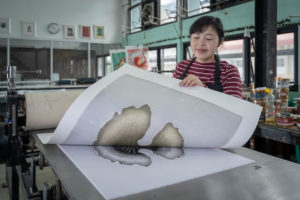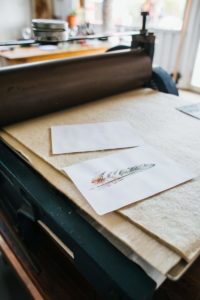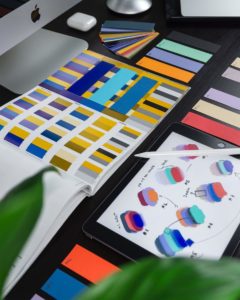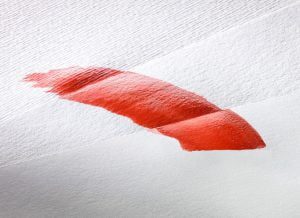Introduction
Art printing is a medium that has been used for centuries to reproduce artworks and make them accessible to wider audiences. It involves creating a matrix or template from which multiple impressions can be taken, resulting in copies of the original image.
These images are often printed on paper or other materials and can be sold individually or in editions. Art printing encompasses a wide range of techniques, each with its unique characteristics and processes.
Definition of Art Printing
Art printing is the process of reproducing an artwork using various printmaking techniques such as relief printing, intaglio printing, planographic printing, serigraphy or screenprinting. The reproduction can be either an original print created by the artist or a reproduction print that is authorized by the artist and produced in multiples. Prints are often made on paper but can also be made on other materials such as fabric, metal, or plastic.
Importance of Art Printing in the Art World
Art prints have played an important role in expanding access to art beyond museums and galleries. They have provided opportunities for people to own high-quality reproductions of art pieces they admire at affordable prices. For artists themselves, producing prints has been a way to create additional revenue streams while also making their work more widely available.
Printmaking has also been integral to many artistic movements throughout history from Renaissance engraving through Modernist lithography up to contemporary digital prints. Many artists have chosen printmaking as their primary medium due to its unique qualities such as texture, line quality, color density, and transferability.
Furthermore, art prints have shaped cultural narratives by producing striking visual imagery that speaks directly to audiences without relying on language barriers. They offer viewers vivid representations that transcend time and speak directly to individuals’ aesthetic interests regardless of where they’re located around the globe.
Art printing is an important component of artistic production that enables artists’ works to be appreciated and enjoyed by more people than would otherwise be possible. The next sections of this article will focus on the different techniques, mediums, and processes of art printing as well as its history and future developments.
The Origins of Art Printing
Art printing has a long and fascinating history that can be traced back to the earliest human civilizations. The origins of art printing can be found in ancient China, where woodblock printing was used to create illustrations and decorative designs on textiles. This technique involved carving images into a wooden block, inking the block, and then pressing it onto paper or fabric.
Woodblock printing later spread to Japan, where it became a highly refined art form. In Europe, art printing began to emerge during the 15th century with the invention of the movable type by Johannes Gutenberg.
This led to the development of letterpress printing, which allowed for faster and more efficient production of books and pamphlets. However, it was not until the 16th century that art printmaking really took off as an independent medium.
Development of Different Techniques and Styles
Over time, a wide variety of different techniques and styles emerged within the world of art printing. Relief printing techniques such as woodcutting, linocutting, and letterpress were widely used throughout Europe during the Renaissance period. Intaglio techniques such as engraving, etching, and aquatint were also popular during this time.
During the 18th century in Europe, new techniques such as mezzotint (a form of tonal engraving) were developed. In addition to traditional printmaking methods like etching and engraving which remained popular through this era new methods like lithography appeared at this time too.
Famous Artists Who Used Art Printing as a Medium
Throughout history, many famous artists have utilized various forms of printmaking to create their masterpieces. Albrecht Dürer was one such artist who used intaglio techniques like engraving with great skill; his engravings are still considered some of his finest works today. Another example is the Japanese artist Katsushika Hokusai who used woodblock printing to create his iconic “The Great Wave off Kanagawa”.
One of the most famous lithographs was produced in 1937 by Pablo Picasso, titled “Guernica”. Picasso’s lithography work is considered some of the most important in art history.
Art printing has a rich history and has played an important role in the development of art throughout the centuries. From its origins in ancient China and Europe to modern digital printing techniques, art printing continues to be a popular and widely respected medium for artists.
Techniques and Processes in Art Printing
Relief Printing: Woodcut, Linocut, Letterpress
Relief printing is a technique where the surface of the printing plate is carved away, leaving the raised areas to be inked. The inked surface is then pressed onto paper or another substrate to create an image. Woodcut, linocut and letterpress are all examples of relief printing.
Woodcut is one of the oldest methods of relief printing. It involves carving a design into a block of wood with knives or chisels.
Ink is then applied to the raised areas and transferred onto paper by pressing it against the block. Woodcuts can produce bold, graphic images with strong lines and textures.
Linocut on the other hand is a more modern version of woodcut that uses linoleum instead of wood as its base material. Like woodcut, a linoleum block is carved using knives or chisels but it offers more flexibility for artists due to its softer texture and ease of cutting.
Letterpress printing involves creating raised type or images on metal or wood blocks that are then inked and pressed onto paper using a press machine. This method was widely used for mass communication in the 19th century before being replaced by offset lithography.
Intaglio Printing: Engraving, Etching, Aquatint
In intaglio printing, lines are incised into a metal plate that holds ink in its grooves. The plate is then pressed onto paper creating an image with raised design elements as compared to relief where they are printed in reverse.
Engraving involves carving lines directly into copper plates with tools called burins creating prints that have very fine detail and crisp lines which make them ideal for reproducing images fashioned after intricate paintings or drawings. Etching also involves incising lines into the plate, but it is done using acid to eat away at the metal.
The artist applies an acid-resistant coating (ground) to the plate, drawing their design into it and then dipping it into an acid bath that will eat away whatever parts of the plate are uncovered by the ground leaving grooves where the ink sits. Aquatint is a variation of etching that uses finely powdered resin in a manner similar to a reverse stencil effect.
A metal plate is covered with resin and then heated to adhere resin particles in place creating a textured “grain” effect. The areas that need to be etched are then coated with the ground and treated as per usual.
Planographic Printing: Lithography
Planographic printing techniques do not require incising or carving on plates. Instead, they rely on the chemical properties of the materials used. Lithography is a form of planographic printing that was invented in 1796 by Alois Senefelder.
The process involves drawing an image with greasy crayons on limestone plates or metal plates treated with photosensitive material called photo-lithography plates which can be coated with photographic negatives. After treating it with chemical agents for water repellency, the printer uses dampened paper to transfer ink from the surface onto the paper, creating a detailed print.
Serigraphy or Screenprinting
Serigraphy printing or screen printing employs stencils made of porous fabric such as silk stretched over wooden frames held taut along sides via hinges called hinges clamps (squeegee). Ink is forced through these stencils onto paper placed underneath resulting in highly detailed prints ranging from single-color graphics to complex designs using multiple colors applied one layer at a time. Screenprinting has its roots in commercial advertising before moving into fine art during the 20th century when artists increasingly explored its potential for color layering effects and possibilities of combining different media forms such as collage techniques within it.
Types of Art Prints
Art prints are reproductions of original artwork that can be produced using various printing techniques. In this section, we will discuss the two main types of art prints: original prints and reproduction prints. We will also talk about the difference between limited-edition prints and open-edition prints.
Original Prints vs Reproduction Prints
Original prints are created by the artist, who uses a printmaking technique to create an image on a plate or block. The plate is then inked and pressed onto paper to create a one-of-a-kind print. The artist usually signs and numbers each print by hand, indicating that it is an original work of art.
Reproduction prints, on the other hand, are created using digital or photographic methods to reproduce an existing work of art. These reproductions can look very similar to the original artwork, but they are not considered original works because they are not created by the artist.
Limited Edition Prints vs Open Edition Prints
Limited edition prints are produced in a set number or series, with each individual print numbered and signed by the artist. Once all of the prints in the series have been sold, no more will be produced.
This makes limited edition prints rare and valuable collectors’ items. Open-edition prints do not have a limit on how many can be produced or sold.
They may still be signed by the artist but are generally less valuable because they lack rarity. Understanding different types of art printing is crucial when collecting or purchasing art as it determines its value and uniqueness among others in circulation.
Originality in art printing offers authenticity while reproduction offers cost-effectiveness for those looking to buy an artwork on a budget without sacrificing aesthetic value. As always, collectors should carefully consider their interests when determining which type of print best suits their needs.
The Business of Art Printing
The Role of Printmakers and Publishers in the Industry
Art printing is a unique industry with its own set of players. Typically, printmakers and publishers are the two primary roles involved in creating, producing, and distributing art prints.
Printmakers are the artists who create artwork that will be printed as a limited edition or open edition art print. They may work with a publisher to get their work printed or may handle all aspects of production themselves.
Publishers play a crucial role in the success of an art print. They bring their knowledge of the market and business expertise to ensure that prints are produced efficiently and cost-effectively while maintaining high standards of quality.
Publishers also handle marketing, distribution, and sales to galleries or directly to collectors. The relationship between printmaker and publisher is typically collaborative.
A publisher may seek out printmakers whose work they admire or who have a track record of selling well in their target markets. The decision on whether to publish an artist’s work is based on factors such as quality, appeal, uniqueness, marketability, and potential profitability.
How to Value and Sell Art Prints
Pricing art prints can be challenging since there is no fixed formula for evaluating them. Determining value requires an understanding of factors such as quality, rarity, provenance (the history of ownership), condition, age, artist recognition factor (how “hot” they are at any given time), and desirability among collectors/curators/art lovers. These factors contribute to pricing for both limited editions (signed & numbered) and open editions (unsigned & unlimited).
To sell art prints effectively requires focusing on building relationships through networking with designers/architects/collectors/gallerists/art lovers etc., advertising/promoting online with social media platforms like Instagram/ Facebook/Twitter/Pinterest, etc., hosting events/exhibitions around the community (in galleries, cafés, museums, etc.), and attending art shows as an exhibitor or attendee. Additionally, printmakers and publishers need to be aware of the legal issues that come with selling art prints.
They must ensure that they have proper copyright permissions for the artwork being produced and sold to avoid any legal issues. It’s essential to have a good understanding of the legal requirements of selling prints in different jurisdictions and countries.
Contemporary Trends in Art Printing
Digital Printing and Its Impact on the Industry
Digital printing has revolutionized the art printing industry, allowing more artists to produce high-quality prints at a lower cost. The introduction of digital technology has made it possible for artists to print their work directly from a computer onto various materials like paper, canvas, and even metal.
This allows artists to create exact replicas of their artwork without losing any details, and with no limit to the number of prints they can produce. However, some critics argue that digital printing has devalued traditional art prints because it is easy to reproduce them in large quantities.
While traditional printmaking techniques are limited by the size of the plate or block used for printing, digital technology makes it possible to print images of any size with infinite possibilities for customization. Despite this debate about its impact on traditional art printing, digital technology has undoubtedly opened up new opportunities for artists and enabled them to reach wider audiences through social media platforms like Instagram and Facebook.
Collaborations Between Artists and Printmakers
Collaborations between artists and printmakers have become increasingly popular in recent years as both parties realize the benefits of working together. Printmakers bring their technical expertise in different printmaking techniques while artists bring their unique creative vision.
The collaboration process usually involves several stages: discussions about ideas and concepts, creating sketches or mockups of the image, and testing different materials and inks if necessary until reaching a final version that meets both parties’ expectations. One example is Shepard Fairey’s collaboration with Obey Giant Prints.
Together they produced iconic images like “Obama Hope,” which became synonymous with Barack Obama’s 2008 presidential campaign. This collaboration proved how powerful partnerships between artists can be when working towards a common goal.
Collaborations between artists and printmakers not only produce stunning works but also offer invaluable learning experiences for both parties. It is an exciting trend in art printing that we hope to see more of in the future.
Conclusion
Summary of Key Points Discussed in the Article:
Throughout this article, we explored the rich history and techniques of art printing. We learned about how different techniques such as relief printing, intaglio printing, planographic printing, and screen printing have been used by artists throughout history to create stunning works of art. We also discussed the role that printmakers and publishers play in the art world and how they value and sell prints.
We examined the differences between original prints versus reproduction prints, as well as limited edition versus open edition prints. We also took a look at contemporary trends in art printing such as digital printing and collaborations between artists and printmakers.
Final Thoughts on the Future Prospects for Art Printing:
As we move into an increasingly digital age, it’s natural to wonder what impact this will have on traditional forms of artmaking such as printmaking. However, it’s important to remember that while technology is advancing at a rapid pace, there will always be a place for traditional mediums like art prints. In fact, many contemporary artists are finding new ways to merge old techniques with new technology to create exciting new works of art.
Whether it’s using 3D printers to create intricate relief prints or combining screenprinting with digital design software, there are countless possibilities for innovation in the world of art printing. So while we may see some changes in how art is printed and distributed in the coming years, one thing is certain: The beauty and craftsmanship of handmade printmaking will always endure.




